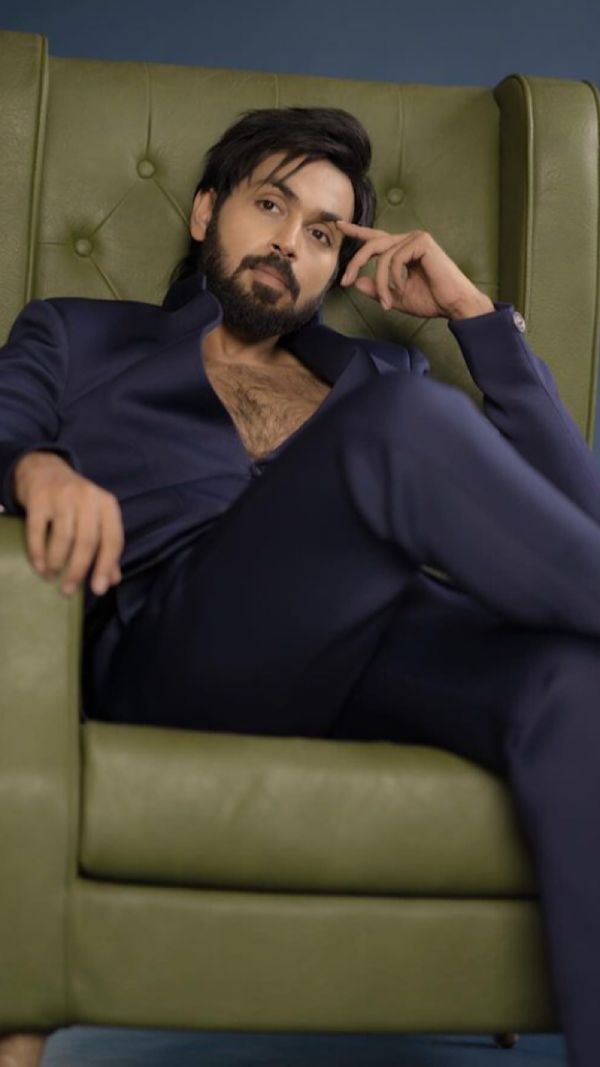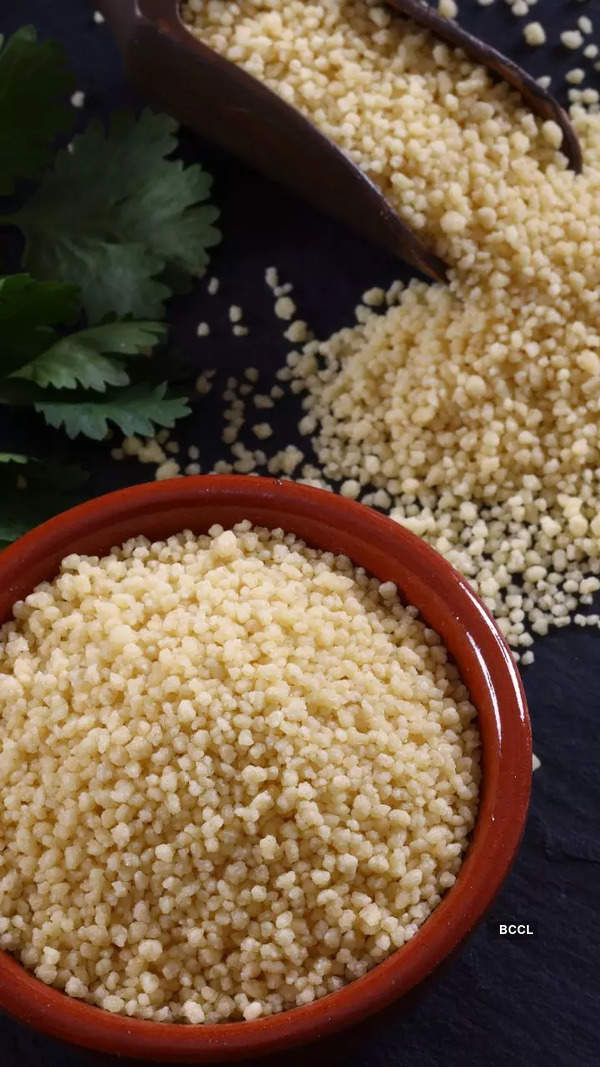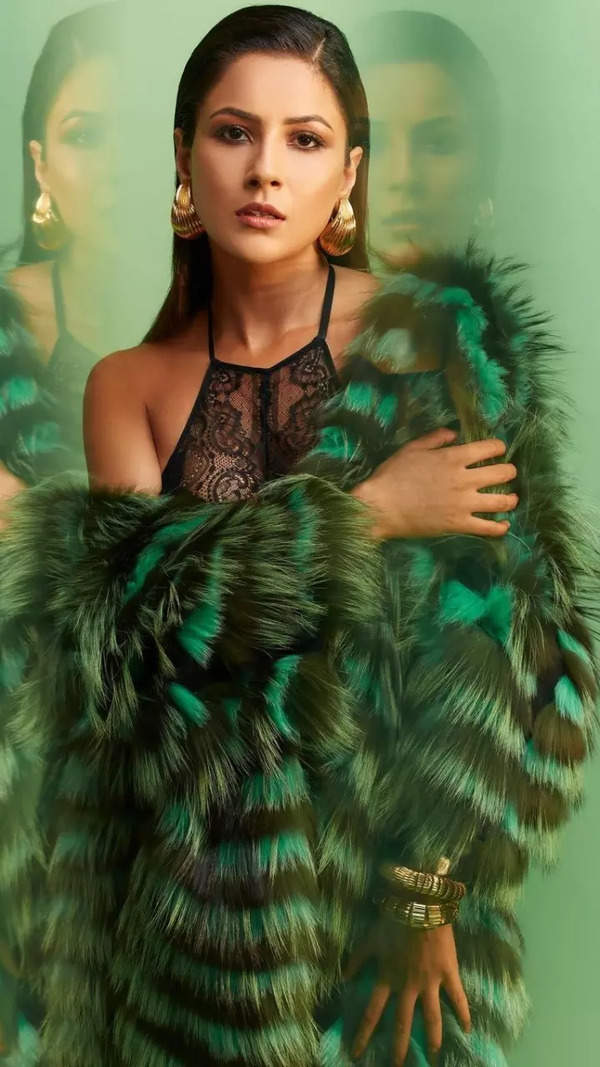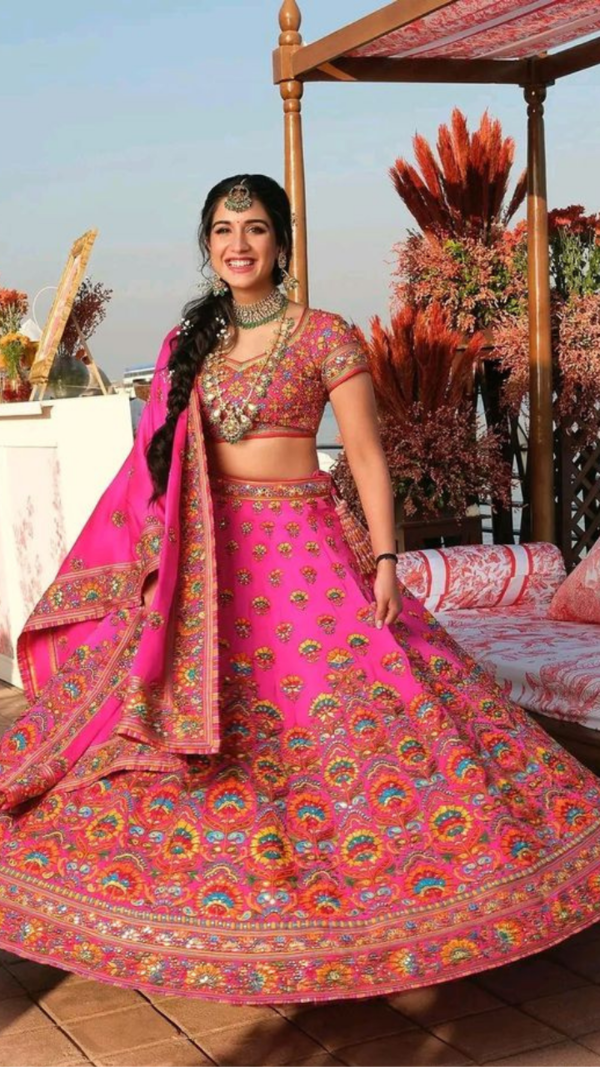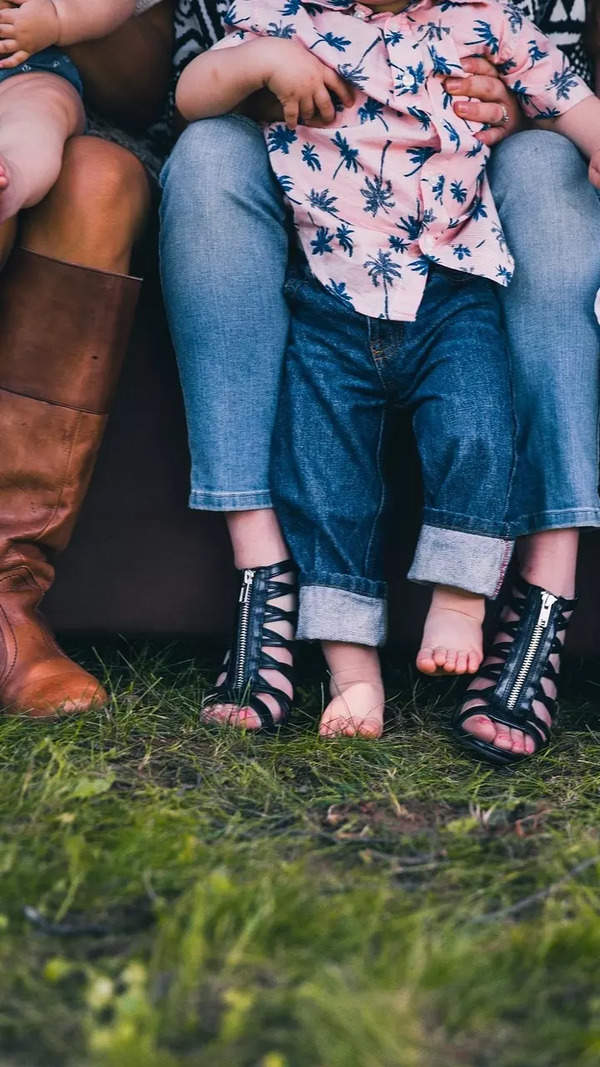Trending
This story is from March 16, 2014
Water, fire, white kapde: The colourful details of Holi shoots
TV’s Holi sequences are anything but fun for show crews – producers say they have to pay extra for 70-80 white outfits and to junior artistes, actors say putting on and taking off gulaal over days ruins their skin and hair.
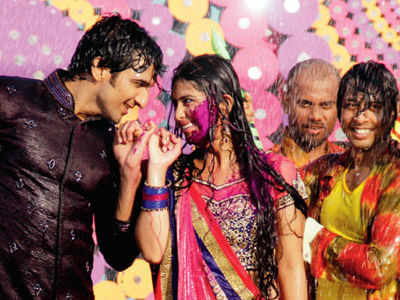
The only mehnat you might have to do for your Holi celebrations is get the colour off after the messy masti. But those vibrant family Holis you see on TV and seek to recreate at home take a lot more work than just that. On the one hand, creatives – the guys behind the scenes – have to contend with budget hikes, while actors have to sometimes apply colour again and again over days, just to get that perfect Holi shot for multiple sequences.Here’s decoding the logistics of shooting a Holi sequence for TV.
Preparations begin almost 15 days earlier “Preparations for festival sequences begin well in advance, and we work on creating a bank of episodes so that actors don’t have to face any inconvenience. We ensure that colours used are organic and they take a hot water shower after playing with them,” says Yash Patnaik, producer of Main Naa Bhoolungi. Gajra Kottary, writer of Balika Vadhu, adds, “Since the Holi sequences require the whole cast, there is lots of planning involved.”
Budget hikes Apart from ensuring that actors don’t fall sick, show producers also have to bear the expenses that usually come with shooting such sequences. “We see a two-three fold increase in budgets due to expenses on dozens of white costumes and roping in junior artistes. Also, for every actor, there are three-four white costumes that are made. I think more than 70 to 80 costumes are made for actors as well as junior artistes in a span of two days for Holi sequences,” says Kinnari Mehta, producer of Ekk Nayi Pehchaan. She adds that apart from budgets, they also have to ensure that safety measures are in place. “For instance, for the Holika dahan sequence, we use a nozzle fire that is extinguished as soon as the sequence ends. There is a firefighter on the sets and we have to be extremely careful,” Mehta adds. Patnaik says, “We’ve spent over a lakh getting white costumes for the actors and junior artistes on our three shows. Also, for putting colour, junior artistes double their rates and also charge for an extra shift.”
Makeup in place of gulaal Sometimes, producers have to use makeup in place of gulaal as actors are quite fussy about their skin. “There are some actors who are not comfortable with having colours applied on their face. We use makeup to create that effect,” reveals Rajan Waghdhare, director of Jeannie Aur Juju.
Tiring time for actors It’s not only the creatives who have to sweat it out to can that perfect Holi shot – the actors also have to look natural while playing Holi for multiple sequences. “It’s been almost seven days since I have been playing Holi. For three days, I played Holi for the special programme of the channel and for the last three days, we have been shooting the Holi sequence for our show. It becomes a little irritating as some scenes require you to have colour on the face and some scenes don’t,” says Gunjan Utreja, the male lead in Madhubala. “ Also, in the Holi sequence in our show, Madhu and I fall in the water tub, so there were a lot of retakes for that and we had to fall into the tub many times before that shot was okayed. As for precautions, I couldn’t even apply oil on my hair or use a special sunscreen on the skin, because all those things show up on camera. We have been surviving on hot coffee to keep warm,” he adds. Roopal Tyagi, the female lead of Sapne Suhane Ladakpan Ke, says, “It was super hectic. Thankfully, my production house was accommodating and I was not put under much pressure, but still, we have been shooting for 13 hours a day. I don’t enjoy shooting for Holi sequences as I am finicky about putting colours on my skin for so long. I also ended up getting some rashes. We can’t apply oil since that shows up on camera, so sunscreen was the only precaution we could take.”
I have lost enthusiasm for the festival “Since we have to get our hair done up, we can’t even oil it. The trick is to wash your hair as soon as the shoot ends. I have been a part of Holi celebrations on different shows and it’s been quite tiring. The only relief was that the shoots were held on different dates and I could manage them. The hair tends to become dry because of all the colours and I had to go for a hair spa. Amid all these shoots, we tend to lose enthusiasm for the actual festival,” says Sargun Mehta, one of the leads of Balika Vadhu.
Preparations begin almost 15 days earlier “Preparations for festival sequences begin well in advance, and we work on creating a bank of episodes so that actors don’t have to face any inconvenience. We ensure that colours used are organic and they take a hot water shower after playing with them,” says Yash Patnaik, producer of Main Naa Bhoolungi. Gajra Kottary, writer of Balika Vadhu, adds, “Since the Holi sequences require the whole cast, there is lots of planning involved.”
Budget hikes Apart from ensuring that actors don’t fall sick, show producers also have to bear the expenses that usually come with shooting such sequences. “We see a two-three fold increase in budgets due to expenses on dozens of white costumes and roping in junior artistes. Also, for every actor, there are three-four white costumes that are made. I think more than 70 to 80 costumes are made for actors as well as junior artistes in a span of two days for Holi sequences,” says Kinnari Mehta, producer of Ekk Nayi Pehchaan. She adds that apart from budgets, they also have to ensure that safety measures are in place. “For instance, for the Holika dahan sequence, we use a nozzle fire that is extinguished as soon as the sequence ends. There is a firefighter on the sets and we have to be extremely careful,” Mehta adds. Patnaik says, “We’ve spent over a lakh getting white costumes for the actors and junior artistes on our three shows. Also, for putting colour, junior artistes double their rates and also charge for an extra shift.”
Makeup in place of gulaal Sometimes, producers have to use makeup in place of gulaal as actors are quite fussy about their skin. “There are some actors who are not comfortable with having colours applied on their face. We use makeup to create that effect,” reveals Rajan Waghdhare, director of Jeannie Aur Juju.
Less water used Owing to water scarcity, makers are also cutting down on the usage of water. Patnaik says, “There won’t be a rain dance, but yes, there will be the customary water tub.” Rajan Shahi, producer of Aur Pyaar Ho Gaya, says, “We never use water for Holi sequences as we don’t want actors to fall sick. We play a waterless Holi on our shows.”
Tiring time for actors It’s not only the creatives who have to sweat it out to can that perfect Holi shot – the actors also have to look natural while playing Holi for multiple sequences. “It’s been almost seven days since I have been playing Holi. For three days, I played Holi for the special programme of the channel and for the last three days, we have been shooting the Holi sequence for our show. It becomes a little irritating as some scenes require you to have colour on the face and some scenes don’t,” says Gunjan Utreja, the male lead in Madhubala. “ Also, in the Holi sequence in our show, Madhu and I fall in the water tub, so there were a lot of retakes for that and we had to fall into the tub many times before that shot was okayed. As for precautions, I couldn’t even apply oil on my hair or use a special sunscreen on the skin, because all those things show up on camera. We have been surviving on hot coffee to keep warm,” he adds. Roopal Tyagi, the female lead of Sapne Suhane Ladakpan Ke, says, “It was super hectic. Thankfully, my production house was accommodating and I was not put under much pressure, but still, we have been shooting for 13 hours a day. I don’t enjoy shooting for Holi sequences as I am finicky about putting colours on my skin for so long. I also ended up getting some rashes. We can’t apply oil since that shows up on camera, so sunscreen was the only precaution we could take.”
I have lost enthusiasm for the festival “Since we have to get our hair done up, we can’t even oil it. The trick is to wash your hair as soon as the shoot ends. I have been a part of Holi celebrations on different shows and it’s been quite tiring. The only relief was that the shoots were held on different dates and I could manage them. The hair tends to become dry because of all the colours and I had to go for a hair spa. Amid all these shoots, we tend to lose enthusiasm for the actual festival,” says Sargun Mehta, one of the leads of Balika Vadhu.
End of Article
FOLLOW US ON SOCIAL MEDIA
